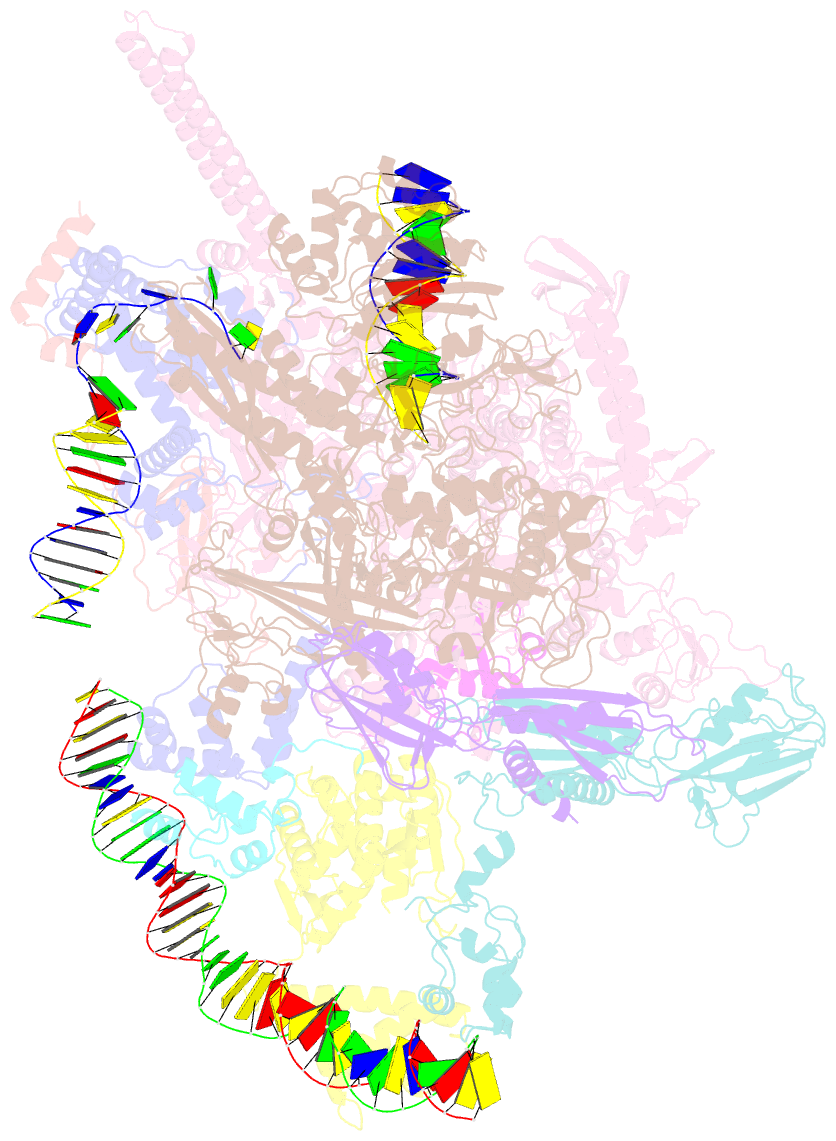Summary information and primary citation
- PDB-id
- 8dy9; SNAP-derived features in text and JSON formats;
DNAproDB
- Class
- transcription-transferase-DNA
- Method
- cryo-EM (3.12 Å)
- Summary
- Streptomyces venezuelae rnap unconstrained open promoter complex with whia and whib transcription factors
- Reference
- Lilic M, Holmes NA, Bush MJ, Marti AK, Widdick DA, Findlay KC, Choi YJ, Froom R, Koh S, Buttner MJ, Campbell EA (2023): "Structural basis of dual activation of cell division by the actinobacterial transcription factors WhiA and WhiB." Proc.Natl.Acad.Sci.USA, 120, e2220785120. doi: 10.1073/pnas.2220785120.
- Abstract
- Studies of transcriptional initiation in different bacterial clades reveal diverse molecular mechanisms regulating this first step in gene expression. The WhiA and WhiB factors are both required to express cell division genes in Actinobacteria and are essential in notable pathogens such as Mycobacterium tuberculosis. The WhiA/B regulons and binding sites have been elucidated in Streptomyces venezuelae (Sven), where they coordinate to activate sporulation septation. However, how these factors cooperate at the molecular level is not understood. Here we present cryoelectron microscopy structures of Sven transcriptional regulatory complexes comprising RNA polymerase (RNAP) σA-holoenzyme and WhiA and WhiB, in complex with the WhiA/B target promoter sepX. These structures reveal that WhiB binds to domain 4 of σA (σA4) of the σA-holoenzyme, bridging an interaction with WhiA while making non-specific contacts with the DNA upstream of the -35 core promoter element. The N-terminal homing endonuclease-like domain of WhiA interacts with WhiB, while the WhiA C-terminal domain (WhiA-CTD) makes base-specific contacts with the conserved WhiA GACAC motif. Notably, the structure of the WhiA-CTD and its interactions with the WhiA motif are strikingly similar to those observed between σA4 housekeeping σ-factors and the -35 promoter element, suggesting an evolutionary relationship. Structure-guided mutagenesis designed to disrupt these protein-DNA interactions reduces or abolishes developmental cell division in Sven, confirming their significance. Finally, we compare the architecture of the WhiA/B σA-holoenzyme promoter complex with the unrelated but model CAP Class I and Class II complexes, showing that WhiA/WhiB represent a new mechanism in bacterial transcriptional activation.





